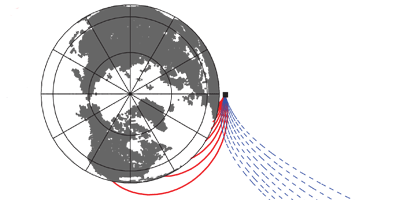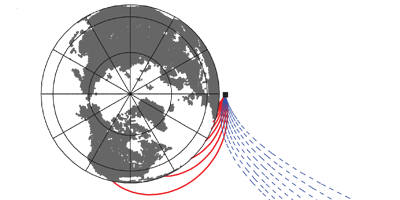Earth’s Magnetic Field Aids Study of Cosmic-Ray Puzzle
In 2008, the PAMELA satellite experiment measured an unexpected increase in the ratio of positrons to electrons in – giga-electron-volt ( ) cosmic rays. The increase was a potential sign that dark-matter particles had been detected: when such particles annihilate with their antiparticles, they can produce electron-positron pairs. But an incomplete understanding of how cosmic rays propagate, or other astrophysical sources, could have explained the positron excess, so further data was eagerly sought.
The Large Area Telescope (LAT) on the Fermi Gamma-ray Space Telescope measured the combined electron and positron spectrum from to tera-electron-volt, while PAMELA measured just the electron spectrum from to (see 4 May 2009 Viewpoint and 19 May 2011 Synopsis). Both experiments agreed with the first PAMELA results, though neither measured positrons separately. Now the Fermi LAT Collaboration reports in Physical Review Letters they have separately measured both the electron and positron spectra from to , including the first measurement of the absolute positron spectrum above and the first determination of the positron-to-electron ratio above .
Particle detectors typically use magnets to bend particles and thereby determine their sign; but with no magnet onboard the satellite, the LAT instead used a model of the Earth’s magnetic field to determine the trajectory of cosmic-ray particles: for certain angles, only electrons could reach the detector from outer space, while for other angles, only positrons. (In both cases, the oppositely signed particles were blocked by the Earth).
The results show the positron fraction continues its surprising increase with energy, but more data and analysis are needed to reach a firm explanation. – Stanley Brown





